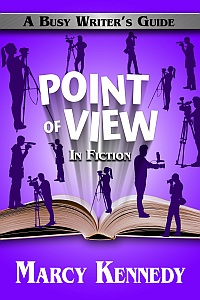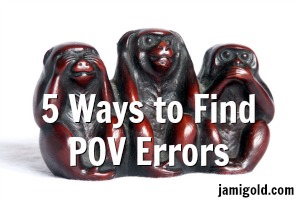As we learn writing craft, we often go through various phases of learning. First we might need to learn about story structure, and then once we have that down, we might focus on developing three-dimensional characters.
Or we might start off with needing to learn grammar and those pesky comma rules. Then once we’ve reached the expert level on that, we might need to pay attention to livening up our settings and descriptions.
In short, learning the craft of writing is an ongoing project. Just when we think we know everything there is to know, we discover another area of writing skills that we weren’t even aware existed.
Some of us enjoy the “always learning” aspect of writing, but some might find it frustrating. Especially when we feel that we don’t want to submit our work to agents or editors—or we don’t want to self-publish our stories—until we’re an expert with it all.
However, I’m not sure it’s possible to be super-skilled in all of these areas. And to some extent, that’s what beta readers or editors are for: finding the errors we miss (and hopefully know how to fix).
One area I struggle with even though I know the rules—and that I know how to fix once it’s pointed out to me—is out-of-POV phrases. Luckily, one of my editors is a genius at finding these.
Today, as one of my awesome guest posters helping me out during NaNoWriMo month, I’m sharing her (and her tips!) with all of you. *grin* Please welcome the wonderful Marcy Kennedy!
*****
How to Hunt Down
Sneaky Point-of-View Errors
Point-of-view errors come in two “sizes.” The big POV error is head-hopping where we jump from one character’s viewpoint to another’s without a proper transition. Once we understand what head-hopping is, it’s usually pretty easy to spot.
Small-scale POV errors (what Jami calls out-of-POV phrases) are much harder for us to see in our own work, so I was excited when Jami asked if I’d share some tips for tracking down those out-of-POV phrases.
But What’s So Bad About Small POV Errors?
Compared to head-hopping, small-scale POV errors can seem like they’re not a big deal. After all, we’re not yanking the reader entirely out of one character’s mind and tossing them into another’s without any warning.
But, in some ways, out-of-POV phrases are actually worse. With head-hopping, the reader might get whiplash and stumble around for a moment, but they’ll eventually figure out that they’ve moved into another character’s head. In other words, they’ll know why things didn’t feel right for a minute.
With out-of-POV phrases, the reader can’t always explain why they’re feeling disconnected from the viewpoint character or like something is “off” with the writing and they couldn’t “get into it.” And because they can’t say exactly what made them less engrossed in the life of the main character, they’re turned away from our work more than if they could say “I hated how the writer jumped back and forth between the characters, but…”
So let’s take a look at how we accidentally use out-of-POV phrases and how to spot them.
#1: We Attribute Emotions to Non-Viewpoint Characters
When we’re writing in a limited point of view, we can include only what our viewpoint character knows. Our viewpoint character can’t know what another character is feeling. They can guess, but all they know is what they can hear or see. Any time we tell the reader what another character was feeling—like “sadly” or “in anger”—we’ve introduced a POV error.
I’ll give you an example:
Dan kept his attention on the bomb, unfazed by the ticking clock.
If Dan isn’t our viewpoint character, our viewpoint character can’t know whether Dan is fazed or unfazed. Dan might seem unfazed on the outside, but he might be barely keeping his calm on the inside.
We could manage this type of out-of-POV phrase in a lot of ways depending on what we wanted from the scene:
- We could have our viewpoint character wonder about how Dan was able to keep his cool when they couldn’t even hand him a tool without dropping it.
- Or we might show a small tick that hints that Dan isn’t as unfazed as he seems.
- Or we might have Dan talking bravely, but show through our viewpoint character’s internal dialogue that they don’t buy it.
How Can We Catch These Errors?
I love editing hacks—ways to make editing our writing a little bit easier. We can use the Find feature in our word processing program to search for emotion words.
(If you don’t know how to create a macro in Microsoft Word to do this, check out this excellent post from Jami. You could also do the words one at a time, but this makes it much faster.)
Some of the emotion words you come across might belong to your viewpoint character. Get rid of those too—they’re telling rather than showing.
#2: We Attribute Motivation to a Non-Viewpoint Character
This is the sneaky point-of-view error I see most often in my editing work. It happens when we tell the reader why a non-viewpoint character did something. It’s a problem because the viewpoint character can’t know for sure why the other characters are doing what they’re doing.
In this example, Eddie isn’t the viewpoint character.
Her movement caught Eddie’s eye, and he turned to face her.
Since she is the viewpoint character, she can’t know why Eddie turned to face her. She doesn’t know if it was her movement, a sound she made, or if he was going to turn in that direction anyway.
How Can We Catch These Errors?
Sometimes errors can only be caught by carefully reading through our fiction with the sole purpose of looking for POV errors. But we can start by using MS Word’s Find feature to search for a few phrases that often go along with this type of POV error:
- at the sight of/sound of
- because
- caught his/her eye
- caught his/her attention
- to (do something) – E.g., James scowled at Christine and reached over to brush dirt off her shirt sleeve. (Christine, the viewpoint character, can’t know what he was intending when he reached. We’re telling his motivation instead of showing his action.)
#3: We Tell the Reader What a Non-Viewpoint Character Thought or Saw
Here’s the one I see most often:
He thought about that for a minute.
If the thinker isn’t the viewpoint character, this is a POV error. The viewpoint character can’t know the person is thinking about what they’ve said or that they’re thinking at all. One way to fix this would be to give the character an action that might imply thinking.
How Can We Catch These Errors?
As you might have guessed by now, I love the Find feature. Here’s your list of words to search for. (And as a bonus, if you find these words used for your viewpoint character, get rid of them there as well. They’re telling rather than showing.)
- thought
- noticed
- realized
- wondered
- believed
- knew
- remembered
- recalled
- reviewed
- considered
#4: We Include Items the Viewpoint Character Doesn’t Notice or Can’t See
The biggest POV offenders in this category tend to be actions that happen without conscious thought, but they can also include things the viewpoint character doesn’t see happening around them.
Here’s an example of how this might look. Karen is our viewpoint character.
Karen turned to look out the window and didn’t notice Jeff slip the business card into his pocket.
Since Karen is our viewpoint character, we can’t record the business card theft because she didn’t notice it happening. One way around this would be to show Karen noticing later that the business card is missing.
How Can We Catch These Errors?
Remember that we can’t catch all out-of-POV phrases using the Find feature, but that said, here’s your starter list: *smile*
- unknowingly
- didn’t notice
- not realizing
- unconsciously
- unaware
Also, watch out for any time you have your viewpoint character close or cover their eyes. You can’t show anything until they open/uncover them again!
#5: We Tell the Reader What the Viewpoint Character Looks Like
There are ways around this, where we can come up with a good reason for our viewpoint character to be thinking about their appearance, so not every description of our viewpoint character is a POV error. Out-of-POV phrases are most likely to sneak in when we describe the expression on our viewpoint character’s face.
Melissa and Jeremy are the viewpoint characters in these examples.
A smirk crossed Melissa’s face.
A pained expression crossed Jeremy’s face.
These are errors because they’re something the viewpoint character can’t see, and they sound like someone describing them from the outside, rather than them experiencing what’s happening from the inside.
We can fix errors like these by switching over to what the viewpoint character feels like inside. Or we can say something like…
Melissa smirked.
We know when we smirk, and it’s an action, so this isn’t a POV error.
How Can We Catch These Errors?
These ones are a bit harder to pin down with a hack, but if you do a search for the word face, you’ll spot 75 percent of them.
Hopefully these tips will help you ferret out some of your out-of-POV phrases and start to identify the ones that are most likely to sneak into your work. In the end, the more familiar we become with what counts as an out-of-POV phrase and where our personal weaknesses lie, the better able we’ll be to avoid them (or catch them during our edits).
*****
 Marcy Kennedy is a science fiction and fantasy author who believes there’s always hope. Sometimes you just have to dig a little harder to find it. She’s also the author of the bestselling Busy Writer’s Guides series, which focuses on giving authors deep teaching while still respecting their time.
Marcy Kennedy is a science fiction and fantasy author who believes there’s always hope. Sometimes you just have to dig a little harder to find it. She’s also the author of the bestselling Busy Writer’s Guides series, which focuses on giving authors deep teaching while still respecting their time.
You can find her blogging about writing and about the place where real life meets science fiction, fantasy, and myth on her website. Don’t forget to subscribe to her free newsletter, where new subscribers receive a copy of her mini-book Strong Female Characters as a thank-you gift!
*****
About Point of View in Fiction:
 Point of view isn’t merely another writing craft technique. Point of view is the foundation upon which all other elements of the writing craft stand—or fall.
Point of view isn’t merely another writing craft technique. Point of view is the foundation upon which all other elements of the writing craft stand—or fall.
It’s the opinions and judgments that color everything the reader believes about the world and the story. It’s the voice of the character that becomes as familiar to the reader as their own. It’s what makes the story real, believable, and honest.
Yet, despite its importance, point-of-view errors are the most common problem for fiction writers.
In Point of View in Fiction: A Busy Writer’s Guide, you’ll learn
- the strengths and weaknesses of the four different points of view you can choose for your story (first person, second person, limited third person, and omniscient),
- how to select the right point of view for your story,
- how to maintain a consistent point of view throughout your story,
- practical techniques for identifying and fixing head-hopping and other point-of-view errors,
- the criteria to consider when choosing the viewpoint character for each individual scene or chapter,
and much more! Buy it on Amazon, Kobo, Barnes & Noble, or Smashwords! Available in print and ebook forms.
*****
Thank you, Marcy! Someday I’ll be better at eliminating these in my work, but until then, thank you so much for sharing your expertise. *grin*
As Marcy said, focusing on these phrases can feel really nitpicky, so this issue might not be one we focus on until after we’ve mastered the basics. But if we’re trying to create a strong connection between our readers and our characters, we need to eliminate anything and everything that creates distance.
I’ve blogged before about how fixing POV errors often comes down to better showing, as we might want to show how the POV character comes to their conclusion, or we might just cut the conclusion and show the evidence. Hopefully this post gives plenty of examples for how to find those errors and make those fixes.
If we understand how POV—and these out-of-POV errors—are related to showing and telling, we might start to see how little nitpicky issues like these affect the overall engagement of our story. And that might be the most helpful tip of all. *smile*
Had you thought about the different ways we can break POV beyond just head-hopping? Do you struggle with some of these out-of-POV issues in your writing? Do you have any other tips for finding these errors? Or tips to help other writers maintain a consistent point of view? Do you have any questions for Marcy?
P.S. Don’t miss my guest post at Writers in the Storm with tips for how to avoid getting stuck with our writing—whether due to time, writer’s block, or story issues—especially during this NaNoWriMo month. *smile*

